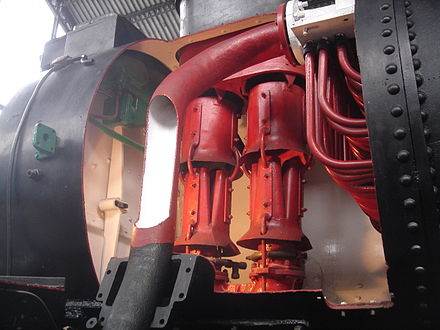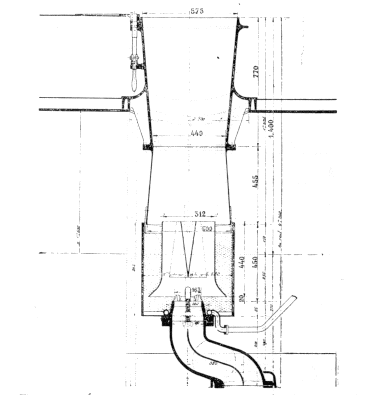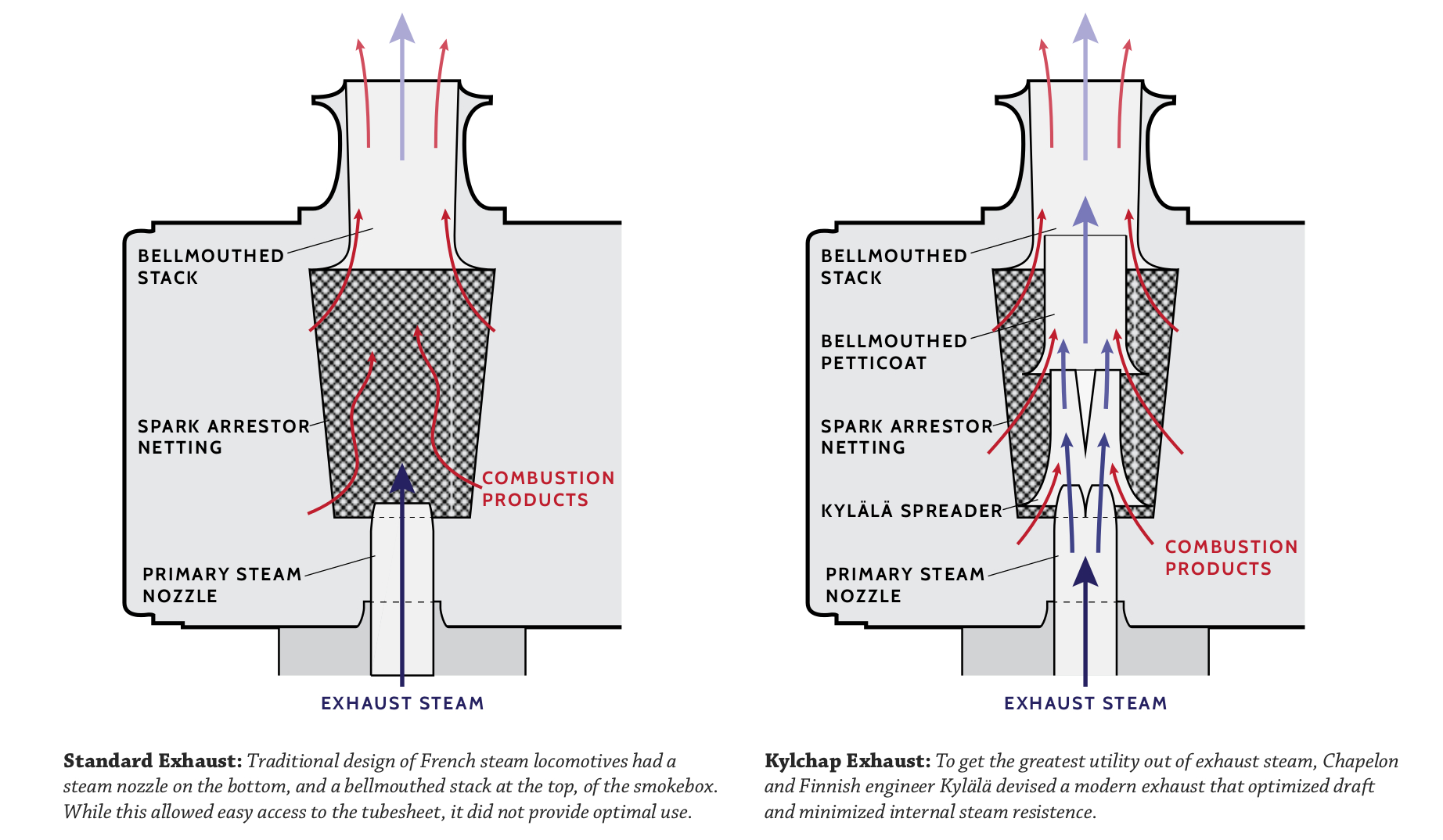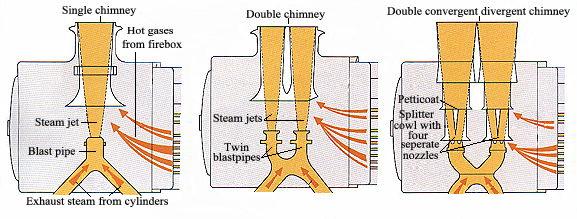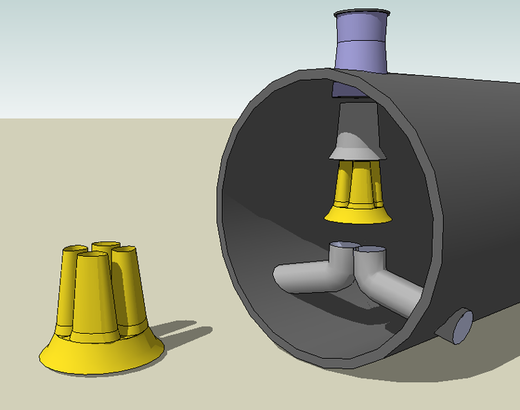The steam locomotive exhaust system consists of those parts of a steam locomotive which together discharge exhaust steam from the cylinders in order to increase the draught through the fire.
Kylchap steam locomotive exhaust system.
As stated on the exhausts page under the terms and definitions section of this website wardale defines the exhaust system as thermodynamically the heart of a locomotive which must therefore be as good as possible within practical limitations.
To ensure the best efficiency chapelon used the first ever triple kylchap exhaust to evenly cater for each of the three cylinders.
In steam s last years this was a little known but important element of the high horsepower superpower movement in steam design.
The kylchap steam locomotive exhaust system was designed and patented by french steam engineer andré chapelon using a second stage nozzle designed by the finnish engineer kyösti kylälä and known as the kylälä spreader.
I had come to the conclusion that the combined input area of the various bellmouths in a kylchap system would be greater than for any other common exhaust system.
The kylchap steam locomotive steam locomotive exhaust system was designed and patented by the famous french steam engineer andré chapelon using a second stage nozzle designed by the finnish engineer kyösti kylälä and known as the kylälä spreader.
The kylchap exhaust consists of four stacked nozzles the first exhaust nozzle uk.
Steam locomotive exhaust drawings.
Basically it is made by stacking of four different nozzles the first one blowing exhaust steam only and called primary nozzle a chapelon designed item of a very particular shape generating as few as possible back pressure dividing the steam flow into four jets.
Thus it was to the advantage of the railroad and the locomotive designer to optimize the exhaust system.
For a typical locomotive m is around 2 varies with degree of superheat grate area.
Updated 23 june 2012.
And pressure ratio draught exhaust back pressure and area ratio blast pipe choke.
This level of attention to detail would pay dividends in the performance of the completed locomotive.
Thus the name kylchap for this design.
This drawing shows an early kylchap exhaust.
It usually consists of the blastpipe or first stage nozzle smokebox and chimney although later designs also include second and third stage nozzles.
Thus the name kylchap for this design.
Thus the name kylchap for this design.
The kylchap steam locomotive exhaust system was designed and patented by french steam engineer andré chapelon using a second stage nozzle designed by the finnish engineer kyösti kylälä and known as the kylälä spreader.
The whole steam system was subjected to chapelon s careful attention to optimize efficiency.
Patents 622 123 626 276 8 21 1926 copies available from the i n p i.
Basically the taller an exhaust system can be the better it functions.
This caused back pressure in the cylinders which represented a power loss and an inefficiency.


